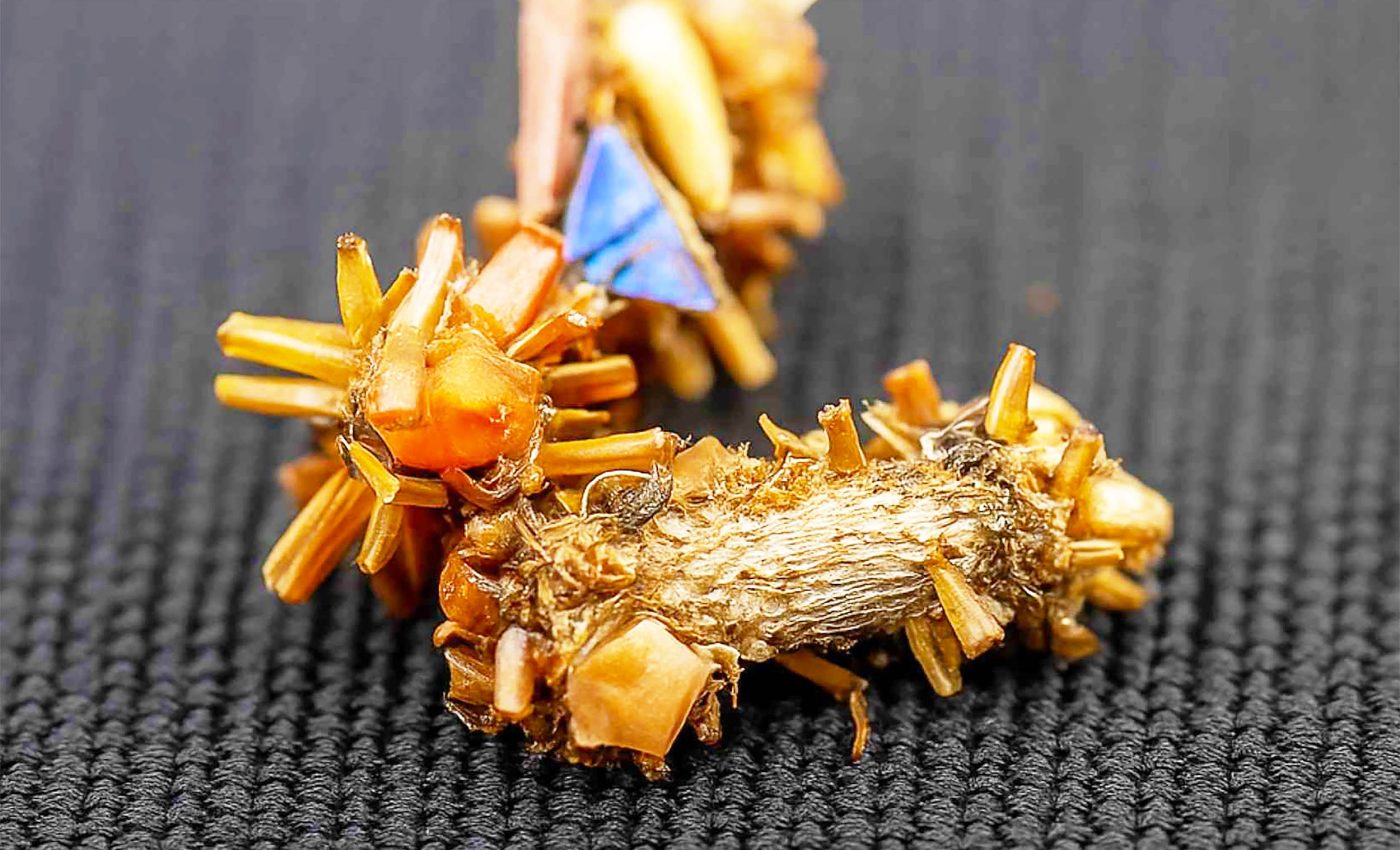
Biologists discover "bone-collecting" caterpillar species that uses dead bugs as camouflage and lives with spiders
Most moths and butterflies eat plants when they’re caterpillars. Well, almost all of them. Out of nearly 200,000 species, barely any eat meat. But scientists found one weird exception in Hawaii: caterpillars that live in spider webs, eating the bugs that get stuck – including the spider that built the web.
Even creepier? It builds a little shelter out of silk, and then decorates its tiny home with the dead body parts of the insects and spiders it kills. It’s like the caterpillar version of a haunted house.
This strange meat-eating caterpillar has been doing its thing for over six million years – longer than the current Hawaiian islands have even existed.
But today, scientists have only found one species left, and it lives in a tiny patch of forest on one mountain in Oʻahu – nowhere else in the world.
According to Daniel Rubinoff from the University of Hawaii at Manoa, these caterpillars now teeter on the brink of vanishing from their only known habitat.
How these caterpillars coexist with spiders
Most similar species, nibble on leaves, stems, or fruit throughout their larval stage.
By contrast, this rare Hawaiian caterpillar lives in spider webs because it’s a predator, placing it among the fewer than 0.13% of carnivorous caterpillars, based on the recent study.
It constructs a mobile case using silk and reinforces it with exoskeleton bits from dead insects. This camouflage seems to disguise its presence from predators while it moves around the forest.
Researchers refer to this creature as a “bone collector” because of how it gathers insect segments. The idea of a caterpillar wearing bug remains may seem outlandish, but it helps it persist in a competitive environment.
Life as a tiny, camouflaged predator
Rather than weaving its own traps, this caterpillar takes advantage of spider webs filled with unwary insects. It can consume portions of the spiders’ leftovers while hiding behind its camouflage.
“It’s like they’re literally living in the lion’s den,” said Rubinoff. Staying concealed is crucial when you share space with an arachnid, especially one that could turn you into a meal if it notices you.

Scientists have observed that these larvae remain safe even in webs owned by introduced spider species. This knack for blending in may allow them to exploit a range of web-building hosts.
Carnivorous caterpillars eating spiders
This Hawaiian species is not alone in swapping a plant-based diet for meat. Some inchworms in the genus Eupithecia are known to capture insects using a sit-and-wait tactic.
Such adaptations hint that carnivory can evolve multiple times in isolated environments. Hawaii, with its remote location and diverse microclimates, is famous for producing surprising insect behaviors.
Biologists note that these unusual diets often emerge when typical plant food is limited or competition is intense. Each instance of carnivory underscores the versatility of caterpillars in responding to selective pressures.
One-of-a kind and already endangered
Large swaths of Hawaii’s native forests have been replaced by non-native plants and feral animals.
The Hawaii Invasive Species Council reports that these intruders can disrupt local ecosystems and push delicate species toward extinction.
This caterpillar occupies a fraction of its former territory in the Waiʻanae Mountains on Oʻahu. Relentless habitat change and invasive predators leave little room for its specialized lifestyle.

Researchers worry that a single damaging event, such as a severe storm or a sudden surge in invasive pests, could wipe out the entire population. Hawaii has already lost many endemic insects to habitat destruction.
Why isolation drives strange evolution
Islands like Hawaii are natural laboratories for unusual life forms. Their isolation allows species to branch off from their ancestors and evolve in weird, specific ways.
With few predators and limited competition, even insects can carve out bizarre niches. These bone collector caterpillars, and their strange relationship with spiders, show how far evolution can stretch when a species gets the time and space to experiment.
Just the idea that a caterpillar species could live side-by-side with a spider sounds completely farfetched, but then science is always full of surprises.
Experts see this caterpillar as a window into the island’s evolutionary past. Its genetic blueprint could reveal how an herbivorous lineage transforms into a predator over millions of years.
“This is the last sort of holdout for this entire lineage,” said Rubinoff. He and his team describe this insect as an astounding survivor of Hawaii’s tough conditions.
Many scientists hope that targeted conservation efforts will preserve it. Practical steps could include safeguarding remaining habitat and restricting further spread of invasive plants.
Future of bone-collecting caterpillars
“It doesn’t do what you’d expect simply because we have these expectations that aren’t always accurate,” said Rubinoff. The team voiced an interest in decoding how these caterpillars identify and process spiders and insect remains.
The researchers suggested that a specialized metabolic pathway might allow them to handle such a heavy protein intake. Further lab work could confirm whether this species has unique enzymes or supportive gut microbes.
By studying them closely, experts can gain insights into the evolutionary leaps that set these caterpillars apart. If researchers secure enough support, future generations may still marvel at an insect that blurs the line between plant-eater and predator.
Small creatures can raise big questions about natural adaptation. The ongoing struggle for survival in Hawaii’s changing environment sets the stage for new scientific discoveries.
Without sustained attention, though, this caterpillar may slip into obscurity like so many island species before it. Conservation supporters warn that every lost native insect weakens Hawaii’s ecological tapestry.
Click here to watch a video about this bone-collecting caterpillar…
The study is published in Science.
—–
Like what you read? Subscribe to our newsletter for engaging articles, exclusive content, and the latest updates.
Check us out on EarthSnap, a free app brought to you by Eric Ralls and Earth.com.
—–













